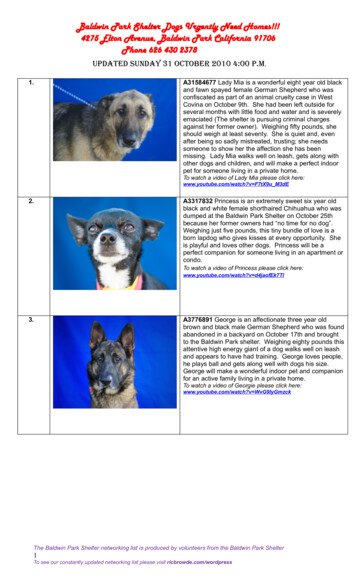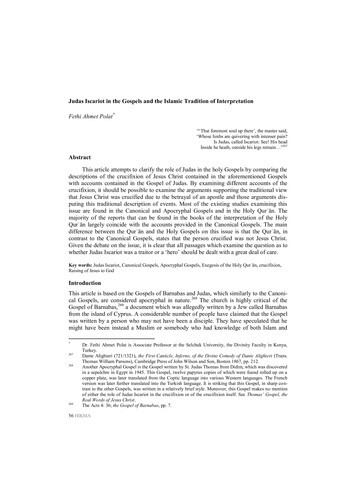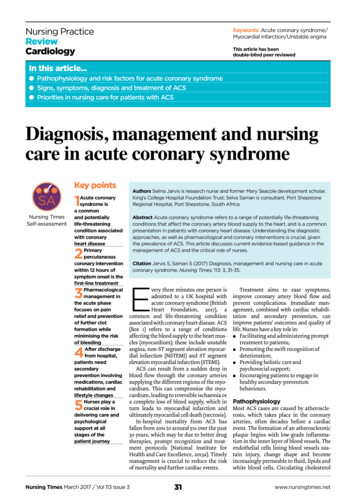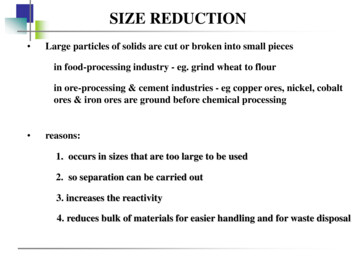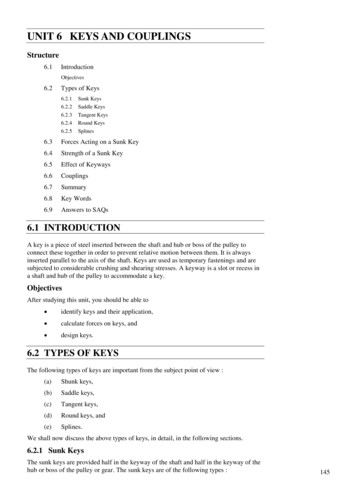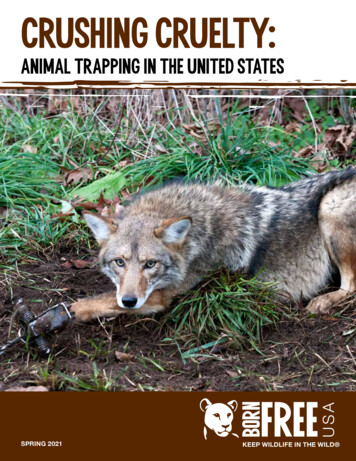
Transcription
CRUSHING CRUELTY:ANIMAL TRAPPING IN THE UNITED STATESSPRING 2021KEEP WILDLIFE IN THE WILD
CRUSHING CRUELTY: ANIMAL TRAPPING IN THE UNITED STATESTABLE OF CONTENTSINTRODUCTION. . . . . . . . . . . . . . . . . . . . . . . . . . . . . . . . . . . . . . . . . . . . . . . . . . . . . . . . . . . . . . . . . . . . . . 3THE “HERITAGE” OF TRAPPING IN THE UNITED STATES . . . . . . . . . . . . . . . . . . . . . . . . . . . . . . . . . . . 4ANIMAL CRUELTY. . . . . . . . . . . . . . . . . . . . . . . . . . . . . . . . . . . . . . . . . . . . . . . . . . . . . . . . . . . . . . . . . . . . 6WHY PEOPLE TRAP . . . . . . . . . . . . . . . . . . . . . . . . . . . . . . . . . . . . . . . . . . . . . . . . . . . . . . . . . . . . . . . . . . 8WHERE PEOPLE TRAP. . . . . . . . . . . . . . . . . . . . . . . . . . . . . . . . . . . . . . . . . . . . . . . . . . . . . . . . . . . . . . . . 9NUMBER OF ACTIVE TRAPPERS. . . . . . . . . . . . . . . . . . . . . . . . . . . . . . . . . . . . . . . . . . . . . . . . . . . . . . . 10HOW TRAPPING IS REGULATED. . . . . . . . . . . . . . . . . . . . . . . . . . . . . . . . . . . . . . . . . . . . . . . . . . . . . . . 12THE ANIMAL VICTIMS. . . . . . . . . . . . . . . . . . . . . . . . . . . . . . . . . . . . . . . . . . . . . . . . . . . . . . . . . . . . . . . . 13NUMBER OF ANIMALS KILLED. . . . . . . . . . . . . . . . . . . . . . . . . . . . . . . . . . . . . . . . . . . . . . . . . . . . . . . . 14TRAPPER EDUCATION . . . . . . . . . . . . . . . . . . . . . . . . . . . . . . . . . . . . . . . . . . . . . . . . . . . . . . . . . . . . . . . 15PURCHASING A TRAP . . . . . . . . . . . . . . . . . . . . . . . . . . . . . . . . . . . . . . . . . . . . . . . . . . . . . . . . . . . . . . . 17HOW TRAPPING REGULATIONS ARE ENFORCED. . . . . . . . . . . . . . . . . . . . . . . . . . . . . . . . . . . . . . . . . 18THE FUTURE OF TRAPPING: STEPS TOWARDS PROHIBITION. . . . . . . . . . . . . . . . . . . . . . . . . . . . . . 19Warning: Some readers may find the information and images presented in this report distressing.
INTRODUCTION“IN THE PRACTICE OF TRAPPING, THEREARE MANY OPPORTUNITIES FOR A WIDELATITUDE OF NEEDLESS WASTE, OF GREED,OF NEGLECT, AND OF CRUELTY.”– EUSTACE HAZARD LIVINGSTON,EDITOR OF THE TRAPPER’S BIBLE . 3In 108 countries around theinjury, and death to millionsof state-level regulations andhas been banned or heavilyall states have some form ofwhich allow advocates andworld, the use of leghold trapsrestricted; the U.S. is not one1of those countries. In the U.S.,leghold and other traps can stillbe used by private citizens forrecreational and commercialpurposes in 48 of the 50 states.In the remaining two, while2trapping has been significantlyrestricted, taxpayer moneycontinues to fund trappingby government officials andagents in the name of “wildlifemanagement” or “pest control.”In addition to leghold traps,body gripping traps, drowningtraps, and snares are widelyused as a means of catchingand killing animals for theiris no way to make this archaicand barbaric practice humane,and while it persists, so toowill the suffering of animals. Ifmore than 100 countries aroundthe world have succeeded inprohibiting, or at least severelyrestricting, trapping, there isno excuse for the U.S. – whichprides itself on its progressivestance on animal welfare – toallow its continued use.This report offers a broadoverview of trapping and itsregulation in the U.S. It identifiescore ethical and animal welfareargues that prohibition, and onlyare deemed a “nuisance.”The cruelty of traps cannot beoverstated. They cause stress,23regulation for trapping, thereconcerns with the practice, andfur, or simply because they1of animals every year. Whileprohibition, can alleviate theseconcerns. Accompanying thereport is an online databaseassociated State Report Cards,legislators to understand thecurrent legislative landscapefor trapping in their locality andexplore recommendations forchange. In addition, the reportprovides links to the widercampaign, outlining steps thatprivate citizens can take tosupport an end to trapping;whether that be reaching outto state representatives to callfor legal change, joining withBorn Free USA to achievebans on trap sales on onlineand other retail platforms, orhelping to raise awareness of,and challenge, trapping onpublic land. We hope that theseresources will support vital workto curb and, ultimately, closethe door on this outdated andcruel practice once and for all. ibrary of Congress. 2016. Laws on Leg-Hold Animal Traps Around the World. [online] Available at: old-traps.pdf [Accessed 12 February 2021].California and HawaiiLivingston, E., 2012. The Trapper’s Bible. New York: Constable & Robinson, p. vii.3BORN FREE USA ︱ ANIMAL TRAPPING IN THE UNITED STATES ︱ 2021
THE “HERITAGE”OF TRAPPING IN THE UNITED STATESMany methods used todayto trap and kill animalswere first introducedduring the early colonization ofthe U.S. The earliest mechanicaltraps date back to the 1600sand were imported by Europeansettlers. As these settlersmigrated across the country,trapping for food, and thenfor the burgeoning fur trade,was commonplace. Whiletrappers today romanticizetrapping as a sustainable wayof interacting with nature, andoften refer to trapping as a formof “conservation” in and of itself,the practice initially decimatedpopulations of wild animals.“By the early 1700s therewasn’t a beaver to be found inMassachusetts Before the endof the eighteenth century, it wasalso gone from Connecticut,and over the next 50 years, itvanished from Vermont, NewJersey, Ohio, Pennsylvaniaand New Hampshire. OutWest in just a decade andhalf, Mountain Men had allDescartes famously stated thatof early European settlement.machine that needed oiling. Itbarely changed since the daysIt is something of a badge ofhonor that the same practices,the same methods, and largelythe same trap designs havebeen passed down fromgeneration to generation. Butwhen we consider this fromthe perspective of the animalssubjected to trapping practicesthat have not changed inover 400 years, this raisesserious concerns for welfare.beavers.” – Frances Backhouse,Once They Were Hats.1Trappers appeal to a narrativeof “tradition” and “heritage” toa whining dog was akin to awas believed that animals weremindless and did not feel pain(or at least, did not feel it in thesame way that humans did).While individual members ofthe public might not have beenspecifically aware of Descartes’philosophy, the sentimentpromoted by him and otherswas hugely influential andinfiltrated public consciousnessand attitudes globally.Four hundred years ago, non-Another popularly held viewunderstood, and the greatrears its head today – takes itshuman animals were littlethinkers of the day, not leastbut annihilated the region’s1justify the fact that trapping hasthe hugely influential RenéDescartes and his ilk, promotedthe belief that animals werelittle more than “automata”or, in other words, machines.at that time – and one that stillorigin from the religious stancethat animals were placed onEarth in order to serve, orotherwise provide for, humans.These positions, coupled witha lack of scientific knowledgeBackhouse, F., 2015. Once They Were Hats. 1st ed. Toronto: ECW Press, p.62.4BORN FREE USA ︱ ANIMAL TRAPPING IN THE UNITED STATES ︱ 2021
of the complex and profoundof animal sentience and welfareways in which humans exploitmeant our treatment of thempractices used to maim and killto the ashbin of history.sentience of other animals,lacked any consideration ofwelfare. Indeed, the conceptof animal welfare was onlymeaningfully developed in thelatter part of the 20th century,so the very idea of it did noteven exist during this period.Today, an ever-growing body ofinformation and understandingcan lead us to conclude thatanimals 400 years ago cannotanimals, should be consignedreasonably be consideredhumane by today’s standards.There is no pride in knowinglysubjecting millions of animalseach year to extreme suffering inthe name of tradition. Trappingis a tradition that, like so manyother archaic and cruelTrappers insist that trapping is humane,but online reviews of the practice lay barethe reality. One trapper, who purchaseda snare on Amazon, left the followinggraphic account of the reality of snares:1They work great. I snared a raccoon on my firstattempt. The trick is to put some irresistible baitin a spot where there is only one way in, forcingthe prey to go though [sic] the snare to get it.I had some concerns that the snare would nottighten around my prey, and that the lock wouldnot allow release of the animal. The snaretightened around the raccoon. When I cameout to see what animal was crying, the raccoonjumped and the snare tightened even morecausing the raccoon the [sic] cry out evenlouder. Apparently he had his front leg orshoulder caught in the snare. So when hejumped over a ledge and the snare tightenedfurther he injured his leg or shoulder and alsothe snare tightened so much that he haddifficulty breathing.I certainly wasn’t going to reach out [to]release the snare around his neck as I wouldcertainly have gotten scratched and bittenby a wild animal backed into the proverbialcorner and fighting for his life. But had it beenpet dog or cat or even a rabbit I could have.This is serious business. Be preparedfor what you are going to do with a wildanimal caught in the snare, fighting for hislife, and suffering and crying. I’m sure notgoing to reach up and release the lockon the snare holding a wild animal.Another review on Amazon gave a briefaccount of coyotes being killed by snares:I have snares [sic] 3 [co]yotes and allthree times it was a neck snare.2It is unclear what happened to the raccoonin the account, but it is clear from the accountthat the trapper had no experience or plan asto what to do when faced with the inevitableoutcome of laying out a snare or other kindof trap. We can only imagine the suffering thatthe coyotes endured as they were strangledby the snares. Snares are banned in 12 statesbut are readily available for sale on sitessuch as Amazon with no legal disclaimer.1 Amazon.com. 2020. [online] Available at: https://www.amazon.com/dp/B07G4MR5LM/ref redir mobiledesktop? encoding UTF8&ref cm cr lh d bdcrb top [Accessed 12 February 2021].2 Ibid.5BORN FREE USA ︱ ANIMAL TRAPPING IN THE UNITED STATES ︱ 2021
ANIMALCRUELTYparticularly companion animals,have been caught and injuredin traps to make trappers lookbad. However, the author ofTrapping 101 – a seasonedtrapper himself – recountsthe multiple times that he hascaught family pets in his trapsand notes that the traps bothinjure and scare the animals. Ina passage discussing methodsof trapping raccoons, he writes,“Honestly, it can be very difficultto release a scared and injuredcat or dog from a legholdtrap I have had it happento me more than once.”1He also talks of “inevitably”catching hunting dogs ifleghold traps are placed nearanimal dens, stating that heTraps are unarguablytraps must be checked everyof traps include: leghold13 states that allow recreationalcruel. The different typestraps, which capture animals bysnapping closed and grippingtheir legs so that they cannotescape; Conibear (or bodygripping) traps, which snapclosed on the body and eitherkill or seriously injure the victim;and snares, which are wires thattighten and lock around a limb,neck, or body of an animal.While the jagged teeth of theolder-style leghold traps havebeen largely discontinued,traps cause pain, injury, anddeath wherever they are used.Thirty-five states mandate that1224 hours, while the remaininghas witnessed confrontationsbetween trappers and hunterswhen this happens.2and commercial trapping allowAfter an animal has alreadyThis means that animals maynot killed outright, they mustor even multiple days injured,be carried out by clubbing thea trap – if they are not killedsuffocating them by kneelingtrapper returns to kill them.them underwater until theyfor traps to be left longer.suffered the trapping itself, ifspend a full 24-hour periodendure the killing, which maystressed, and struggling inanimals to death, shooting them,by the trap itself – before theor standing on them, holdingTrappers often claim that thedrown, or breaking their necks.leghold traps without teethThe above-mentioned authoranimals they capture. Theyanimals with a firearm butactivists tend to cherry-pickweapons that can be used todo not cause injury to thetells readers he prefers to killfurther claim that animal rightsgoes on to outline the differingcases in which animals, andclub an animal to death: “ManyMassaro, P., 2020. TRAPPING 101. New York: Skyhorse Publishing, p.93.Ibid. p. 926BORN FREE USA ︱ ANIMAL TRAPPING IN THE UNITED STATES ︱ 2021
objects can be used to crush anare often longer. In 28 stateshandle, a heavy dead branch,recreational trapping, checkanimal’s skull, such as an axeor any other improvised club.”3Animals who are able to freethemselves from a trap maycarry with them injuries thatfester and cause infection andthat, in turn, can lead to longterm suffering and death.that allow commercial andtimes for drowning traps arelonger than 24 hours. Our pastresearch showed that animalsdo not always die in these trapsand struggle to keep their headsabove water. In an incidentrecorded by our investigatorsin 2011, a raccoon hadDrowning traps –fought to survive a drowning“submersion sets” withinreturned, he forcibly held thevictims by drowning. This isuntil the raccoon drowned.5euphemistically calledtrap but, when the trappertrapping circles – kill theirraccoon under the surfacea terrifying way to die and isconfirmed by the U.S. veterinaryprofession to be inhumane. TheAmerican Veterinary MedicalAssociation (AVMA) categoricallystates in its Guidelines for theEuthanasia of Animals: 2020Edition that “Drowning is nota means of euthanasia andis inhumane.”4 As animals indrowning traps are expected todie, check times for these trapsTHE AUTHOR OF TRAPPING 101– A SEASONED TRAPPER HIMSELF –RECOUNTS THE MULTIPLE TIMES THAT HE HASCAUGHT FAMILY PETS IN HIS TRAPS ANDNOTES THAT THE TRAPS BOTH INJURE ANDSCARE THE ANIMALS.345Ibid. p. 160 vma.org. 2020. AVMA Guidelines for the Euthanasia of Animals: 2020 Edition. p.112 [online] Available at: 2020 Euthanasia Final 1-15-20.pdf [Accessed 12 February 2021]. Born Free USA, 2011. Victims of Vanity. [online] Silver Spring: Born Free USA, p.1. Available at: ing/victims-of-vanity-ii-2016/ [Accessed 12 February 2021].7BORN FREE USA ︱ ANIMAL TRAPPING IN THE UNITED STATES ︱ 2021
WHY PEOPLE TRAPPeople trap for a numberof reasons. Millions ofanimals each year aretrapped so that they can beskinned for the fur trade. Whilethe numbers are high, AFWA’s2018 Characteristics of Trappersreport stated that only 21%of trappers said their trappinghas been a very or somewhatimportant source of income overthe past three years. Twenty-three percent of trappers did noteven sell their furs.1 As such, itwould appear that fur trappingis largely a hobby pastime,or that trapping is carriedout for different purposes.purpose of allowing humansOther animals are trapped byprivate citizens or governmentofficials and contractors inthe name of “pest control” orthe more euphemistic “wildlifemanagement.” Most trapping ofthis type is carried out for twomain reasons. First, trapping iscarried out to protect livestock– meaning free-living nativeanimals are trapped in order toprotect other animals who arebeing raised to be killed for theirmeat. Second, predators aretrapped to allow for increasesof prey animals, often for the12TRAPPING NARRATIVES CENTER THEENJOYMENT OF THE TRAPPERS ASTHE PRIORITY, AND THE ENTERTAINMENTVALUE TOTALLY ERASES THEEXPERIENCES OF ANIMALS KILLEDany inherent valueIN PURSUIT OF THAT ENJOYMENT.to hunt those prey animals.Finally, trapping has beenromanticized for generationsas simply an “outdoor pastime”and a way for individuals tospend time in nature, often withfamily members or friends. Thepractice in these narrativescenters the enjoyment ofthe trappers as the priority,and the entertainment valuetotally erases the experiencesof animals killed in pursuitof that enjoyment.An example of how theexperience of the animal, andtheir life mayhave, is made irrelevant in thetrapping narrative can be foundin the following passage inthe introduction of the book,Trapping 101. In it, the authorlikens the killing of animals intraps to harvesting vegetables:“In spite of what the politicallycorrect faction would indicate,all of our food sources,including vegetables, werealive at one point in time, andin order to become food, thatlife had to be extinguished.Furbearing animals are arenewable resource, just asdeer or evergreen trees are.”2 018. Characteristics of Trappers. [online] Association of Fish and Wildlife Agencies. Available at: 15/2942/8278/Characteristics-of-Trappers-06-18-18 reduced.pdf [Accessed 12 February 2021].Massaro, P., 2020. TRAPPING 101. New York: Skyhorse Publishing, p.8.8BORN FREE USA ︱ ANIMAL TRAPPING IN THE UNITED STATES ︱ 2021
WHEREPEOPLE TRAPbeauty”1 to the millions of people who visit theselands each year. With more than 2,500 milesof land and water trails, these refuges are populardestinations for walkers, many of whom areaccompanied by companion animals.Yet, despite this mission, animal trapping ispermitted on 216 (38%) of the refuges, a total of11.1 million acres of public land. This means that,not only is this cruel practice allowed in areasof public land – funded by taxpayers – but thatpeople and their companion animals are at riskwhen walking the trails.Many national and state parks as well as wildlifemanagement areas not only allow trapping butactively promote it as a recreational pastime forvisitors. One may find trapping listed in theCOMPANION ANIMALSARE AT RISK WHENWALKING THE TRAILSP“Things to Do” section of a state or nationalpark’s website. Trapping is considered to be inderogation of national park values, and thus,the law prohibits trapping in national parks as amatter of course unless the practice is authorizedut simply, people trap everywhere. Whetherin the specific enabling act of the individual parks.as “pest control,” or on public lands.explicitly include provisions to allow trapping andthat is on their own land as a hobby orShockingly, trapping is permitted and activelypracticed within the National Wildlife RefugeSystem (NWRS). The system of wildlife refugesSixty-four of the national parks have moved tohunting within their boundaries despite it beingat odds with the values under which the nationalpark system was established.2was established by President TheodoreIn addition to public land, people trap on theirrefuges as well as 38 wetlands managementpredators or animals considered to be “pests” oracres of land. Within the system, more thanhobby or desired “skill” to develop and practice.Roosevelt in 1903 and now encompasses 567own land. This might be an attempt to eradicatedistricts which, together, comprise 95 milliona “nuisance,” trapping for fur, or even just as a296 threatened and endangered species areconserved across 356 of the individual refuges.The true extent of trapping across public andprivate land in the U.S. is impossible to ascertain,According to the U.S. Department of the Interior,but some figures are made publicly availableestablished “to conserve America’s wild animalsin this report.the National Wildlife Refuge System wasand form the basis of the data analysis usedand plants,” and to “provide enjoyment and12 oi.gov. 2019. Celebrating National Wildlife Refuges. [online] Available at: lifeDrefuges [Accessed 12 February 2021]. Nationalparkstraveler.org. 2020. Here’s Where You Can Hunt And Trap In The National Park System. [online] Available at: #: :text ic%20and%20direct%20congressional%20authorization. [Accessed 12 February 2021].9BORN FREE USA ︱ ANIMAL TRAPPING IN THE UNITED STATES ︱ 2021
NUMBER OF ACTIVE TRAPPERSIn the conduct of ourresearch, 23 (48%) of the 48states that issue licensesfor trapping provided us withfigures pertaining to the numberof trapping licenses issuednot included in these figures.With the above in mind, in orderto calculate a best estimate forfigure totaled 96,113 licenses.Some states, such as Alaska,Maryland, and Colorado, havecombined hunt/trap licensesor hunt/trap/fish licenses anddo not separate out trappingactivities from hunting activities.Colorado did not provide ourresearchers with informationon the number of combinedencompass all 48 relevantstates. This gives us anestimated total of 145,868trapping licenses nationwide.the total number of trappingThe number of licenses perremoved the figures for thoseon the size and topographylicenses nationwide, wein the last 12 months. This10licenses issued and is thereforestates that we knew issuedcombined hunt/trap or hunt/trap/fish licenses so as not toinflate the overall figure. Wethen calculated the averagenumber of trapping licenses perremaining states for whichwe had information, thenextrapolated that figure tostate will invariably differ basedof the state (and thus, theavailability of suitable landfor trapping and hunting) andpopulation. While this differentialmay be represented in theabove calculation due to the useof an average number oflicenses across states, a secondcalculation was carried outBORN FREE USA ︱ ANIMAL TRAPPING IN THE UNITED STATES ︱ 2021
that considered the averageCOVID-19 INCREASES INTEREST IN TRAPPINGper capita percentage oftrapping licenses issuedWhile the COVID-19 pandemic continues at the time ofwriting in early 2021, those seeking an optimistic slant on thedevastating virus have looked towards the largely positiveimpact that human society’s reduction in travel and pausingof various industries (and associated emissions) – madenecessary by lockdowns and other restrictions – might haveon the natural environment. Indeed, an article published in thescience journal, Nature, noted: “Some obvious and immediateeffects [of the pandemic] are reflected in the worldwide reportsof reduced traffic congestion, clearer skies, cleaner waterwaysand the emergence of wildlife into human settlements.”1Anecdotally, environmentalists have described the currentrestrictions as giving nature “an opportunity to heal.”per state (0.045%), and thenextrapolated that to encompassthe entire population in the 48states that allow trapping. Thisgives us a second estimate of130,798 trapping licenses.For the purpose of this report,and based on the calculationsabove, we believe the totalnumber of licensed privatetrappers in the U.S. to bebetween 130,798 and 145,868at present.But reports suggest that a new trend emerged as the U.S.moved out of the stricter periods of lockdown but remained ina period when indoor and group recreational activities werestill limited. These reports have evidenced the sales of huntingand trapping licenses for the 2020/2021 reaching record highs.New York State reported record hunting – in particular“big game hunting” – and trapping license sales in thefirst few days of availability, with sales double thosefrom the same period of the previous year.2 Similartrends were reported in Iowa, Virginia, Texas, Michigan,Georgia, and Wisconsin. Gun and ammunition salesalso increased significantly in the same period.With this in mind, it is likely that the numbers of trappersactive during the 2020/2021 season will have increasedfrom previous years, taking a significant additionaltoll on the lives of animals who fall victim to them.1211 iffenbaugh, N., Field, C., Appel, E., Azevedo, I., Baldocchi, D., Burke, M., Burney,DJ., Ciais, P., Davis, S., Fiore, A., Fletcher, S., Hertel, T., Horton, D., Hsiang, S.,Jackson, R., Jin, X., Levi, M., Lobell, D., McKinley, G., Moore, F., Montgomery,A., Nadeau, K., Pataki, D., Randerson, J., Reichstein, M., Schnell, J., Seneviratne,S., Singh, D., Steiner, A. and Wong-Parodi, G., 2020. The COVID-19 lockdowns:a window into the Earth System. Nature Reviews Earth & Environment, 1(9),pp.470-481. Dec.ny.gov. 2020. DEC Reports Record Sales for Big Game Hunting and TrappingLicenses, Nearly Triple 2019 Opening Day Sales - NYS Dept. of EnvironmentalConservation. [online] Available at: https://www.dec.ny.gov/press/121334.html [Accessed 12 February 2021].BORN FREE USA ︱ ANIMAL TRAPPING IN THE UNITED STATES ︱ 2021
HOW TRAPPING IS REGULATEDOf all 50 states, onlyCalifornia and Hawaii havesignificant restrictionson trapping. In California,commercial and recreationaltrapping is prohibited, andin Hawaii, trapping is onlypermitted by a governmentagent. Despite this, trappingby government agents as aform of “wildlife management”is not insignificant in thesestates. For California, availableinformation suggests that 660trapping licenses were issuedduring the 2019/2020 trappingseason. This would encompasstrapping carried out under thehave some form of licensingBear trapping has been bannedpest control but would nottrapping. However, not allof Maine, which still permits itcarrying out trapping. In Hawaii,license. For example, in“government contractors” foranimals for commercialtrapping on the Hawaii BIDSother kinds of trapping, suchlists government contractsnot. Whether or not a licensegovernment contractors. Noprivate land differs from state toto which trapping is carried outspecies of animal being trapped.mantel of wildlife management/regime in place with regard toinclude state authoritiestrapping activities require aeight companies are listed asAlabama, trapping of furbearingthe purpose of hunting andpurposes requires a license, but1website, a website whichas recreational trapping, doopen for tender and currentis required when trapping ondata is available on the extentstate and is contingent on theby these contractors, nor do weknow if this is an exhaustive list.Only six states have issuedbans on leghold traps, fiveAll other states allow trapping bystates have banned conibearand commercial purposes andstates have prohibited snares.private citizens for recreational1in all states with the exceptionon the proviso that only snaresor live traps are used. Trappingof bobcats is banned in ninestates and otters are protectedfrom trapping in eight states.Only two states limit the numberof traps that are permitted foruse, but various states issue“bag limits” on the number ofanimals who can be killed.A detailed matrix of statetrapping regulations isavailable at bornfreeusa.org/crushingcruelty(body gripping) traps, and 12 awaiibids.us. n.d. Government Contractors in Hunting and Trapping. [online] Available at: s-114210-Hunting-Trapping.htm [Accessed 12 February 2021].12BORN FREE USA ︱ ANIMAL TRAPPING IN THE UNITED STATES ︱ 2021
THE ANIMAL VICTIMSMAGGIE’S STORYThe range of species targeted isextensive. Beaver, bobcat, coyote,fisher, fox, marten, mink, muskrat,opossum, otter, raccoon, skunk, andweasel are commonly targeted animals.As gray wolves were delisted from federalprotection under the Endangered SpeciesAct, they are now increasingly targetedin hunting and trapping in a growingnumber of states. Only two states controlthe number of traps each trapper ispermitted to set.In addition to animals deliberately targeted,there are countless unintended victims oftraps. Born Free USA maintains a databaseof unintended trapping victims based onnews reports and direct reporting byconcerned citizens. One such victimswas Maggie the puppy, who is luckyto be alive today.Between 2010 and 2020, Born Free USAdocumented 267 unintended victims oftraps. This is most certainly only the tipof the iceberg in terms of true numbers.Just five of the 48 states that allowrecreational and commercial trappingdemand that trappers submit reportsto document the number of unintendedtrapping victims caught in their traps.13In early 2020, Maggie, a Great Pyrenees puppy, hadthe misfortune of being caught in a leghold trapin Tennessee.She was only 12 weeks old when she found a way outof her outdoor pen and wandered off her family’sproperty, which was next to a wooded area wherepeople often set traps for coyotes. Maggie wasgone for two days before returning home withsevere injuries to her paw and leg. Maggie’s injuriesconsisted of multiple fractures: all of her metacarpalsin the paw were fractured and her carpus was alsoseverely damaged. There was also significant softtissue damage done to her paw and leg. Due to theseverity of Maggie’s injuries, and the probability of notregaining use of the leg, the veterinarian determinedthat it would be necessary to amputate the injured leg.Maggie’s treatment was partially funded by theBorn Free USA Trapping Victims’ Fund, which helpspay medical bills for animal victims of trapping.Maggie was cared for by the National Great PyreneesRescue before being adopted by a loving family.Thankfully, Magg
In addition to leghold traps, body gripping traps, drowning traps, and snares are widely used as a means of catching and killing animals for their fur, or simply because they are deemed a “nuisance.” The cruelty of traps cannot be overstated. They cause stress, 1 Library of Congress. 2016. Laws on

